Fiery Red Feathers, Black Wings and Tail, and a Shining Beak Make the Crimson-Backed Tanager's Appearance Spectacular
If there is one melody that no one will ever tire of, it’s the chirping of birds. Walking in nature and listening to their pleasant melodies has such a calming effect on us.
Even on our smartphones and other devices, we use their songs for relaxation. Some of us simply enjoy listening to their lovely tunes.
Perhaps that is why, among all the bird species on the planet, passerines, also known as songbirds, are among the most favored. However, one bird species will never cease to amaze us with its appearance - the Tanagers.
Tanagers are part of the Thraupidae family, within the order Passeriformes. The Thraupidae family comprises about 240 species, most of which are vividly colored, giving them an irresistible appearance.
While you can certainly try to choose a favorite species of tanager, we must forewarn you that it will be a challenging task, almost impossible to accomplish. Each of these birds boasts a distinct and adorable appearance, characterized by its own outstanding beauty.
To showcase their stunning appearance, here is one of them - the Crimson-backed Tanager (Ramphocelus dimidiatus).
It is a small bird with striking red feathers. Its feathers are burgundy-red on the head and chest, but as they extend toward the abdomen and lower back, the color brightens to a vivid red.
The tail and wings are black, and the shiny white beak completes its perfect look.
Although the Crimson-backed Tanagers' way of life, habits, and behavior have not been wholly recorded and studied yet, we do know some interesting facts about these mysterious birds.
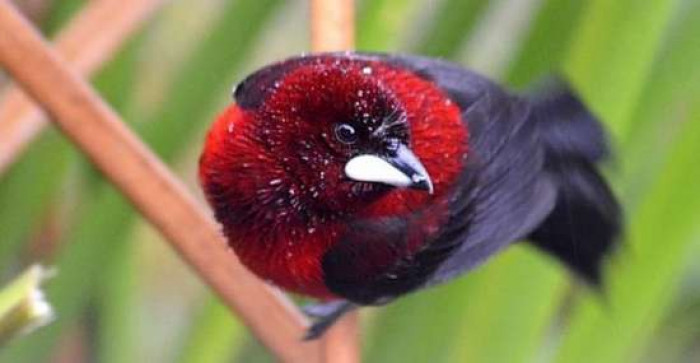
The Crimson-backed Tanager is a small bird that reaches a length of about 18 cm or 7.1 inches.
The females have slightly darker feathers with black underparts. During the mating season, the females lay blue eggs with dark spots.
The number of eggs laid per female has not been observed yet.
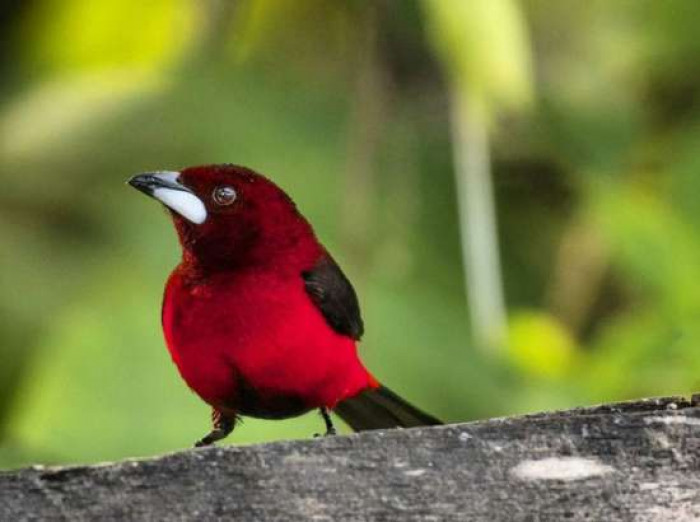
They can be found in South and Central America, primarily in Panama, Venezuela, and Colombia.
In Panama, they can be found on the western side of the country, in the provinces of Chiriquí and Veraguas, as well as on Coiba Island and the Pearl Islands. The Crimson-backed Tanager has a nickname in Panama; it is called "Sangre de toro," which means "Blood of the bull."
They also prefer subtropical or tropical marshlands and subtropical or tropical damp shrublands in Bolivia, Peru, Colombia, Brazil, and Ecuador.
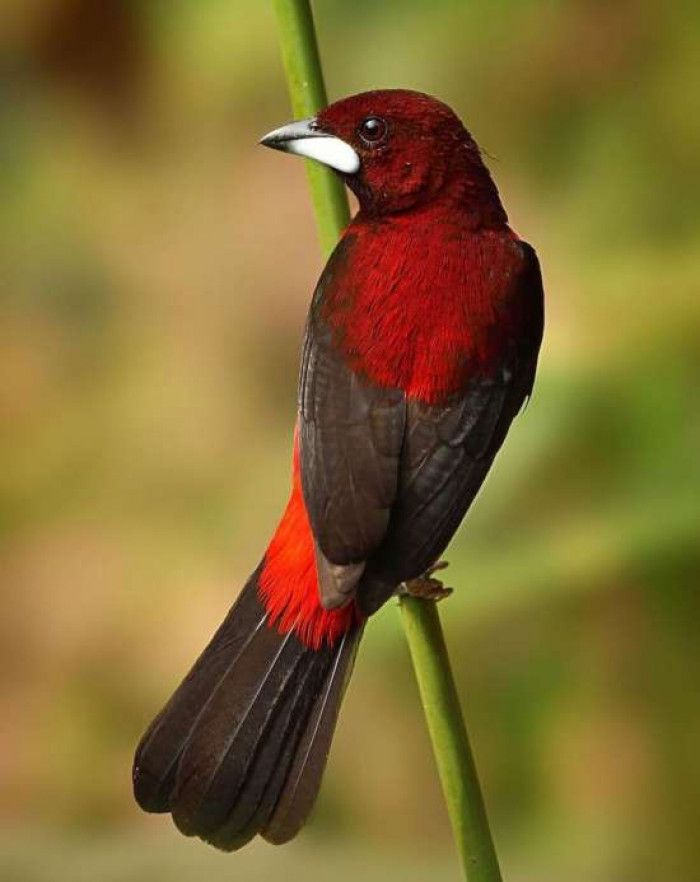
These birds prefer to inhabit forests, brush, and gardens.
Their favorite habitats are lowland forests and severely degraded former woodlands.
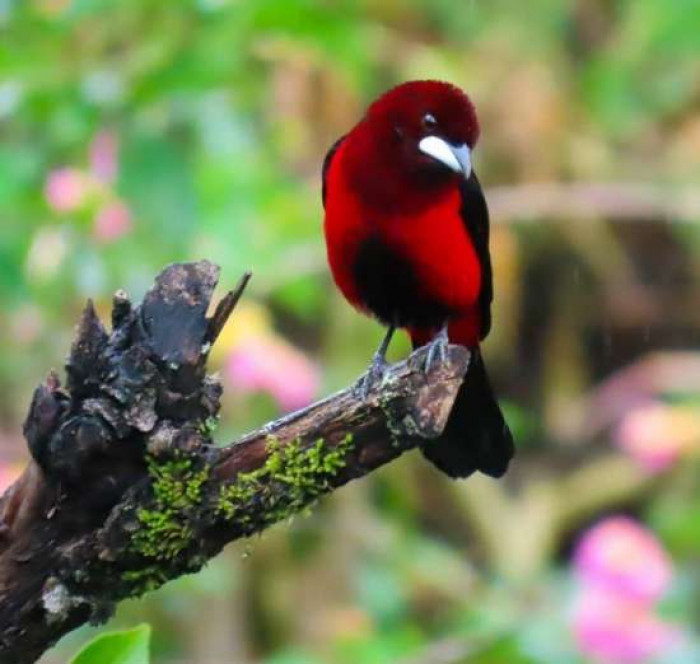
They live in flocks.
"The Crimson-backed Tanager was first described by French naturalist Frédéric de Lafresnaye in 1837. It is one of nine species of brightly colored tanagers in the genus Ramphocelus.
Mitochondrial DNA evidence indicates that its closest relative is the masked crimson tanager (R. nigrogularis), and the two split around 800,000 years ago." Wikipedia
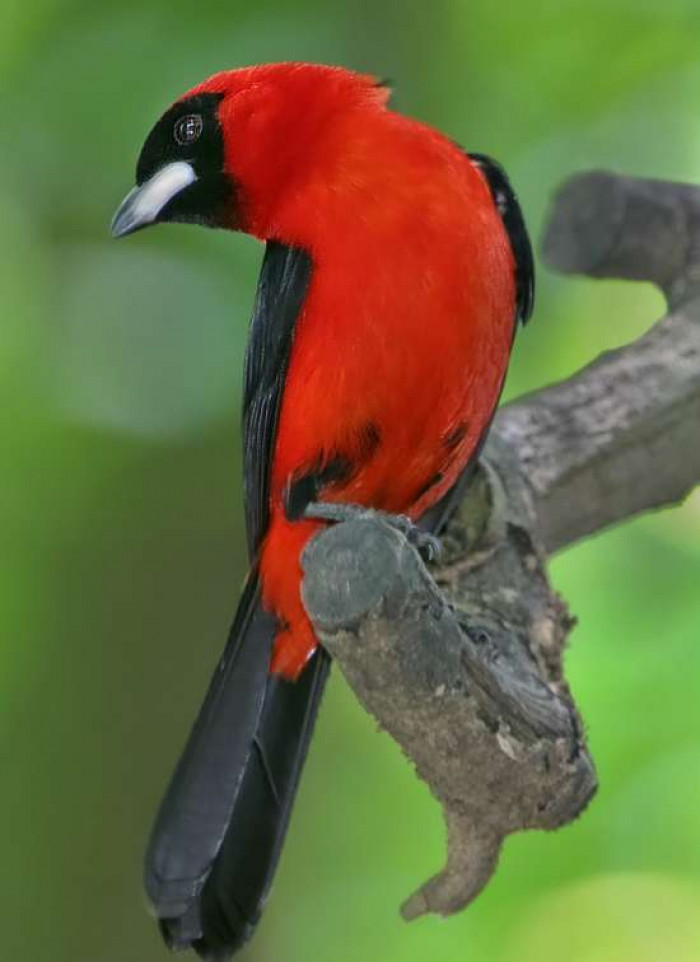
Tanagers are among the most beautiful birds. They predominantly wear vividly colored feathers, which make them stand out.
Although there are many subspecies of tanagers, each possesses its own charm and catches the eye effortlessly. The Crimson-backed Tanager is particularly special for its shining beak, and the fiery red feathers only enhance its adorability.



